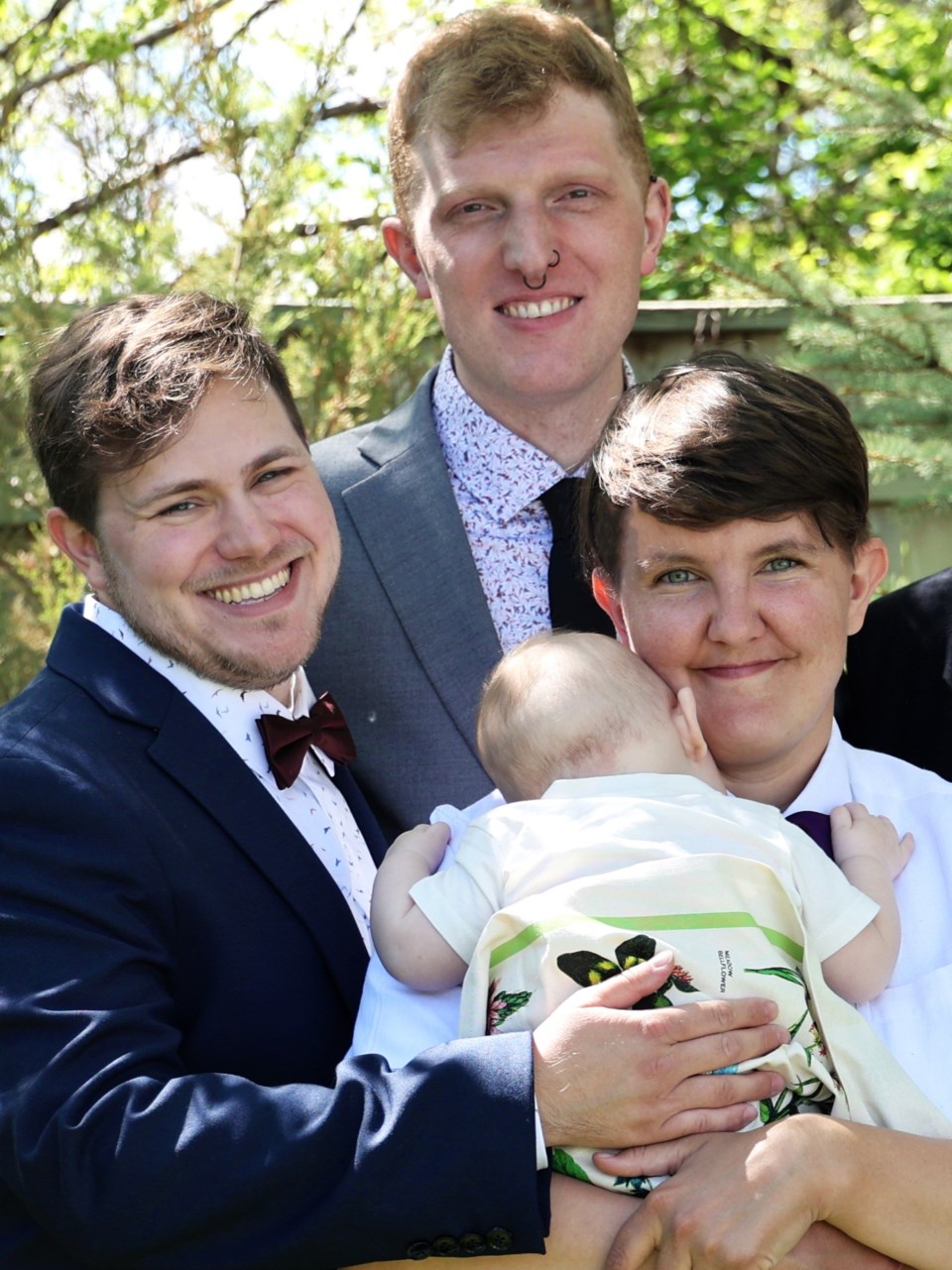River's family tree has three branches — one for each parent.
Markus Harwood-Jones, one of River's dads, adjusted the five-month-old's baby book so it would reflect the family's unconventional parenting arrangement.
"I keep having to wipe out sections like that," the 31-year-old said of the parenting keepsake, in an interview from his home in Toronto.
Altering that book is just one of the ways Harwood-Jones has redrawn the family template since he, his husband Andrew and their friend-turned-co-parent Hannah started planning to have a baby six years ago.
A growing number of families may find themselves in a similar position as they diverge from the nuclear structure that used to be the norm.
A new tranche of 2021 data released this week by Statistics Canada shows there were more than 250,000 children younger than 15 — roughly four per cent — who live with their parents or grandparents and somebody outside of their direct family unit.
The data also show that coupled transgender people, such as Harwood-Jones, are just as likely to be parents as cisgender people in a relationship — 47 per cent compared to 50 per cent.
It's the first time Statistics Canada differentiated between a person's gender and the sex they were assigned at birth in the census, so it's not clear whether a greater portion of trans people are having kids.
But even with that change, River's family doesn't fit neatly in any of Statistics Canada's categories on family structure.
All three parents are named on the birth certificate, reflecting the equal role they play in River's life, regardless of whose genetics the baby carries.
The trio also drafted a parenting agreement using the guidelines Ontario provides for separating parents, in case the current arrangement that sees them all living together breaks down.
"For anybody considering co-parenting, I would definitely recommend making a such an agreement," Harwood-Jones said. "You can even get it notarized."
Legal provisions aside, Harwood-Jones said there have still been barriers to typical family life as long-standing structures lag behind societal shifts.
"The challenge in a three-parent family definitely shows up in the medical field," Harwood-Jones said.
When River came down with a fever, policies introduced at the children's hospital to slow the spread of COVID-19 meant only two parents could be with the baby.
"They wouldn't even let Andrew in the room or in the waiting room," Harwood-Jones said.
Likewise, while the family's midwife secured them an exception so both dads could be in the birthing suite with the baby's mother, that wasn't the case for the post-birth suite, where they had to stay for days due to a difficult delivery.
"Andrew and I had to take turns sleeping there," he said.
"I understand we're living in a time where there needs to be restrictions for who can be present for medical procedures. But there also needs to be recognition that those rules are being written with a heteronormative assumption. And that heteronormative assumption leaves out families like ours."
Vanda Matos and Krista Petersen, who have two children together, came up against some of those assumptions while trying to conceive.
"We worked with three different fertility clinics," Petersen said. "And some of them were amazing, and some of them I'd go in and they're like, 'Oh, where's your husband?'"
The most recent census data shows there were 95,435 same-sex cisgender couples in 2021, 15 per cent of whom had kids. Ten years earlier, per Statistics Canada, 10 per cent of the 64,575 same-sex couples had kids.
Matos and Petersen said they've benefited from the progress that's been made over the years, and were able to find a more inclusive fertility clinic.
They've also found a child-care provider who is aware of pervasive heteronormative messaging, Petersen said.
"She's super great," she said. "If a book has a mom and a dad, she doesn't just do a mom and a dad. She diversifies it. She makes sure it's dads and moms and grandparents and all other types of grown-ups."
Margo Hilbrecht, executive director of the Vanier Institute of the Family, said the new census data will allow governments to see how prevalent LGBTQ families are so that policy can keep up with social change.
"They can't make effective change until they know what they're dealing with," Hilbrecht said. "These data really help us to understand what families look like in Canada and how they've been changing so that we can direct policy efforts in that area."
This report by The Canadian Press was first published July 14, 2022.
Nicole Thompson, The Canadian Press


